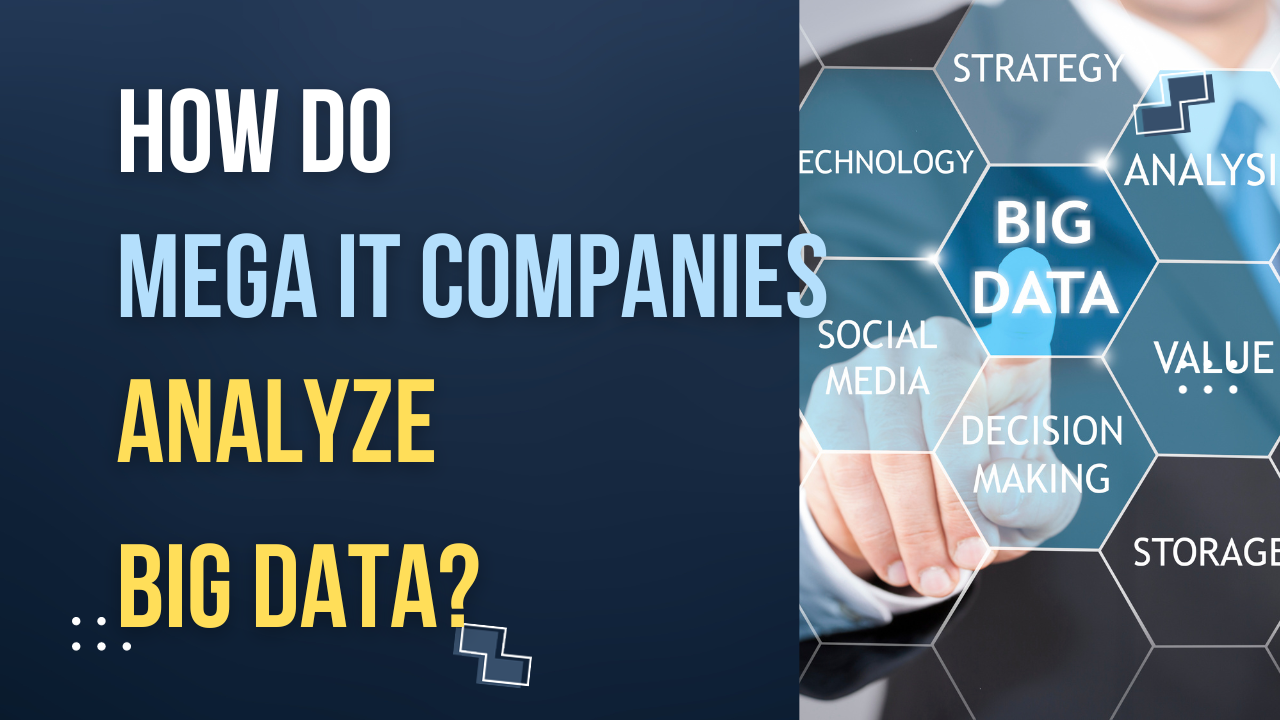Table of Contents

Analyze big data in today’s world is akin to navigating a vast ocean of information, where traditional tools like Excel, once pivotal in data analysis, fall short in managing the scale of data that companies like Google handle daily. The enormity of this challenge can be likened to attempting to multiply two 500-digit numbers with a basic calculator. Just as this task is beyond the capabilities of the calculator, so too is the analysis of massive datasets beyond the reach of conventional methods. This scenario underscores the necessity of advanced techniques such as MapReduce and Hadoop, which have emerged as revolutionary solutions in the field of big data analysis.
1. The Challenge of analyze Big Data
The realm of big data is marked by its three Vs: Volume, Velocity, and Variety. The volume of data is staggering, growing exponentially with every passing second. Velocity refers to the speed at which this data is generated and needs to be processed. Variety speaks to the diverse types of data, from structured numeric data to unstructured text, images, and video. Analyzing such diverse and voluminous data with traditional methods is not just impractical; it’s impossible.
1.1. Why Traditional Methods Fall Short
Excel and similar tools have limitations in processing power and storage capacity, making them unsuitable for big data tasks. They are designed for smaller, structured datasets and lack the computational abilities to handle large-scale, complex data analysis. This inadequacy is not just about processing power; it’s also about the inability to derive meaningful insights from such vast, unstructured datasets.
2. The Concept of Distributed Computing
The solution to this problem lies in distributed computing. Consider the task of counting a city’s population. If one person were to undertake this task, it would be incredibly time-consuming. However, if the city is divided into smaller neighborhoods, with different individuals counting each area, the task becomes much more manageable. This method of dividing a task to conquer it efficiently is the essence of distributed computing, and it’s precisely what the MapReduce algorithm leverages.
2.1. MapReduce: Simplifying Complexity
MapReduce, developed by Google, is a programming model that simplifies the processing of large data sets across distributed clusters of computers. It consists of two main stages: Map and Reduce. In the Map phase, the task is divided into smaller sub-tasks, distributed across multiple nodes. Each node processes a small chunk of data, much like individuals counting the population in different neighborhoods. In the Reduce phase, the results from all nodes are gathered and combined to form the final output. This method not only makes the task manageable but also significantly faster, as multiple nodes work in parallel.
3. Hadoop: Bringing MapReduce to the Masses
Hadoop is an open-source framework that implements the MapReduce model. It allows for the distributed processing of large data sets across clusters of computers using simple programming models. Hadoop is designed to scale up from single servers to thousands of machines, each offering local computation and storage. This means that rather than relying on a supercomputer, Hadoop uses a network of standard, off-the-shelf servers. The system is robust, as it automatically handles failures at the application layer.
3.1. The Architecture of Hadoop
Hadoop consists of two main components: the Hadoop Distributed File System (HDFS) and the MapReduce engine. HDFS is designed to store vast amounts of data across many machines, while providing high throughput access. It divides files into large blocks and distributes them across nodes in the cluster. The MapReduce engine, on the other hand, is responsible for processing the data. Hadoop’s architecture allows for the efficient and reliable processing of big data.
4. The Impact of MapReduce and Hadoop
The introduction of MapReduce and Hadoop has revolutionized the way we handle and analyze big data. These technologies have been adopted by tech giants like Facebook, Netflix, and eBay, transforming their data processing capabilities. They’ve enabled these companies to analyze vast datasets quickly and derive insights that were previously impossible. This has had a profound impact on various industries, from retail to social media.
4.1. Beyond Processing: The Rise of Data Science
The complexity and importance of big data analysis have given birth to the field of data science. Data science combines aspects of statistics, computer science, and domain expertise to extract meaningful insights from large, complex datasets. This interdisciplinary field goes beyond mere data processing; it involves the use of advanced algorithms, machine learning techniques, and predictive modeling to understand and leverage the power of big data.
4.2. Data Science: Harnessing Big Data
Data science plays a crucial role in making sense of the terabytes and petabytes of data generated daily. By applying techniques from statistics and machine learning, data scientists can predict trends, understand customer behavior, and make data-driven decisions. This capability is particularly important in industries like finance, healthcare, and marketing, where strategic decisions are increasingly driven by data analysis.
5. Real-World Applications of Big Data
The practical applications of big data and data science are numerous and varied. In retail, for example, big data analysis helps companies understand purchasing patterns, optimize inventory, and enhance customer experiences. In healthcare, it enables the analysis of patient data to improve treatment outcomes and advance research. Social media companies use big data to tailor content to individual users, enhancing engagement and advertising effectiveness.
5.1. Impact on Business and Society
The impact of big data extends beyond individual companies to society as a whole. It has the potential to address large-scale social issues, like climate change and public health, by enabling the analysis of patterns and trends that were previously invisible. Governments and non-profit organizations are increasingly leveraging big data to inform policy decisions and target interventions more effectively.
6. Challenges and Ethical Considerations
While the benefits of big data are immense, there are also significant challenges and ethical considerations. Privacy concerns are at the forefront, as the collection and analysis of data often involve sensitive personal information. There is also the risk of bias in data and algorithms, which can lead to unfair or discriminatory outcomes. Ensuring the ethical use of big data and protecting individuals’ privacy are ongoing challenges in this field.
6.1. Navigating the Future of Big Data
As we navigate the future of big data, it will be important to balance the benefits of data analysis with these ethical considerations. The field is evolving rapidly, with new technologies and methodologies emerging regularly. Staying ahead of these developments and understanding their implications will be key to leveraging the full potential of big data analysis.
7. Conclusion: Embracing the Data-Driven Era
The era of big data represents a paradigm shift in how we collect, analyze, and utilize information. The advent of technologies like MapReduce and Hadoop has made it possible to process and make sense of data at a scale that was previously unimaginable. As we continue to advance in this data-driven era, the role of data science will become increasingly important, not just in business and technology, but in every aspect of our lives. The future is data-driven, and those who can understand and leverage this resource will lead the way in innovation and discovery.
Are you curious about How does Google Search work?



